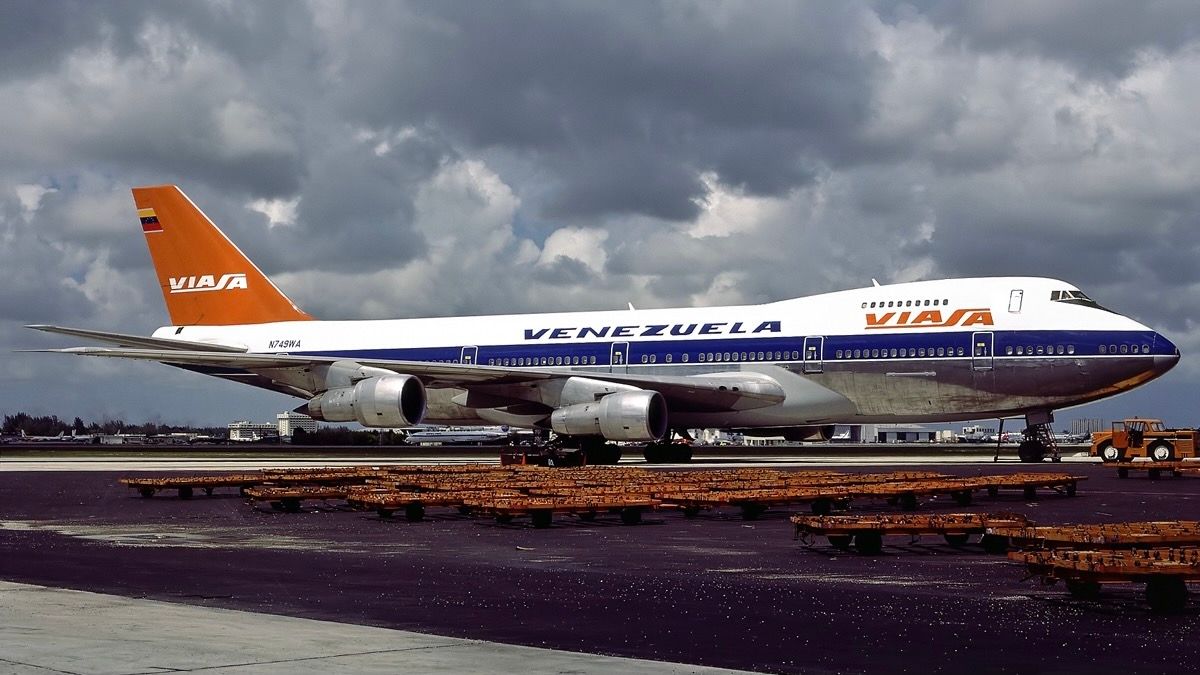Summary
- Viasa, the national carrier of Venezuela, operated from 1960 to 1997 and played a significant role in developing the country's aviation industry.
- The airline had strong partnerships with KLM and Iberia, and its operations grew rapidly throughout the 1960s, including the formation of a Panamanian carrier.
- Despite facing challenges, including a fatal accident in 1969, Viasa remained profitable until 1976.
It has been over a quarter of a century since Venezolana Internacional de Aviación Sociedad Anónima (VIASA) stopped flying. The operator was the national carrier of Venezuela until it ceased operations in January 1997.
Strong positioning
In the mid-20th century, Venezuelan authorities had the goal of launching an airline that did not need state intervention. Subsequently, a new carrier was founded on November 21st, 1960, and its capital was split between the government, LAV, Avensa, and Pan American. Notably, the private sector made up the entire board.
The airline's maiden flight on April 2nd, 1961 was in partnership with KLM, seeing the Dutch carrier fly a DC-8 on behalf of the new South American outfit. The aircraft left Caracas and stopped in the Azores, Lisbon, Madrid, and Rome on the way to Amsterdam. On the way back, the Douglas plane headed to Curaçao, Bogotá, and lima after landing in the capital of Venezuela.
With operations underway, Simón Bolívar International Airport had the opportunity to become a major gateway to South America, much like how Colombia’s El Dorado is today.
Viasa added Iberia to its list of European partners, helping operations grow throughout the 1960s. By the spring of 1966, the airline was flying a DC-8-50 and three Convair 880s. Additional DC-8s soon joined the fold along with the DC-9-10. Rapid growth even spurred it to start a Panamanian carrier in the form of PAISA.
There was a fatal accident on March 16th, 1969. A Douglas DC-9 performing Viasa Flight 74 crashed when taking off from Maracaibo-Grano de Oro Airport, killing all 84 occupants and 71 people on the ground.
This crash was the DC-9's deadliest accident. It was also the deadliest in aviation history as a whole at that time.
Get the latest aviation news straight to your inbox: Sign up for our newsletters today.
A new start
Despite the tragedy, every year since its formation until 1976, the airline reported a profit. However, rising fuel costs and union issues saw the government nationalize the company.
Viasa took pride in representing its country. Unlike the hardships that Venezuela’s economy is facing in the present day, the country’s industry was rising, which the airline was keen to make the most of.
A 1980 Viasa marketing promotion in New York Magazine stated:
“As the flagship of Venezuela, Viasa is the ambassador of our country in 28 cities on 3 continents. Vibrant as Venezuela's booming economy, as warm as its people; Viasa is Venezuela,
"From our reservation agents to our baggage handlers; from our gourmet chefs to our ground hostesses, from our efficient ground crews to our superb flight crews, Viasa trains all to bring you the best service on the ground and in the air. What we needn't bother to teach is what comes naturally to everyone at Viasa - the warm Venezuelan hospitality. It's because so much skill and planning goes into your flight on the ground, that we're so good in the air.”
Love aviation history? Discover more of our stories here.
The latter years
The 1980s saw the DC-10 and even the Airbus A300 join the fold. Domestic service also began by the time the decade was over. The company was ready to be privatized, and Iberia made a $145.5 million bid to take on 60% of the airline in the summer of 1991.
The new structure didn't last long. All the airline's planes were placed under Iberia's ownership and Iberia's old Boeing 727s were put on Viasa routes against American Airlines Boeing 757s and Airbus A330s along with United Airlines Boeing 757s. Additionally, all supplies had to be bought centrally via Madrid.
In the end, Viasa struggled to find liquidity, and the carrier stopped flying on January 23rd, 1997. Ahead of this date, crew members rejected a restructuring plan with Iberia and a state-run holding company that had a 40% share both refusing to inject additional funds. The move was then made to liquidate the airline.
Viasa had plenty of memorable moments during this run. It was the first Latin American carrier to fly the Boeing 747, which joined on lease in 1972. Other favorites, such as the Lockheed Super Constellation and MD-80, were also part of the fleet over the years, assisting the airline to operate to the likes of Argentina, Brazil, Mexico, Canada, the United States, France, Germany, Italy, the Netherlands, Portugal, Spain, and the United Kingdom.
National motives
Those familiar with Latin American aviation will be familiar with the name Viasa in the form of Conviasa, which is the current flag carrier of Venezuela. Conviasa stands for Consorcio Venezolano de Industrias Aeronáuticas y Servicios Aéreos and is the successor to Viasa.
Authorities had the idea to create a new national carrier at the turn of the century to fill the void left by the legacy airline. Finally, in March 2004, Venezuelan president Hugo Chávez himself signed a decree to launch Conviasa, with flights commencing that November.
Like its predecessor, Conviasa has had its fair share of financial and operational issues. However, the airline will be keen to turn things around in this post-pandemic recovery period. The local industry can thank Viasa for developing its market over half a century ago.
What are your thoughts about Viasa and its history? Do you have any memories of the carrier over the years? Let us know what you think of the airline and its operations in the comment section.
Source: New York Magazine

